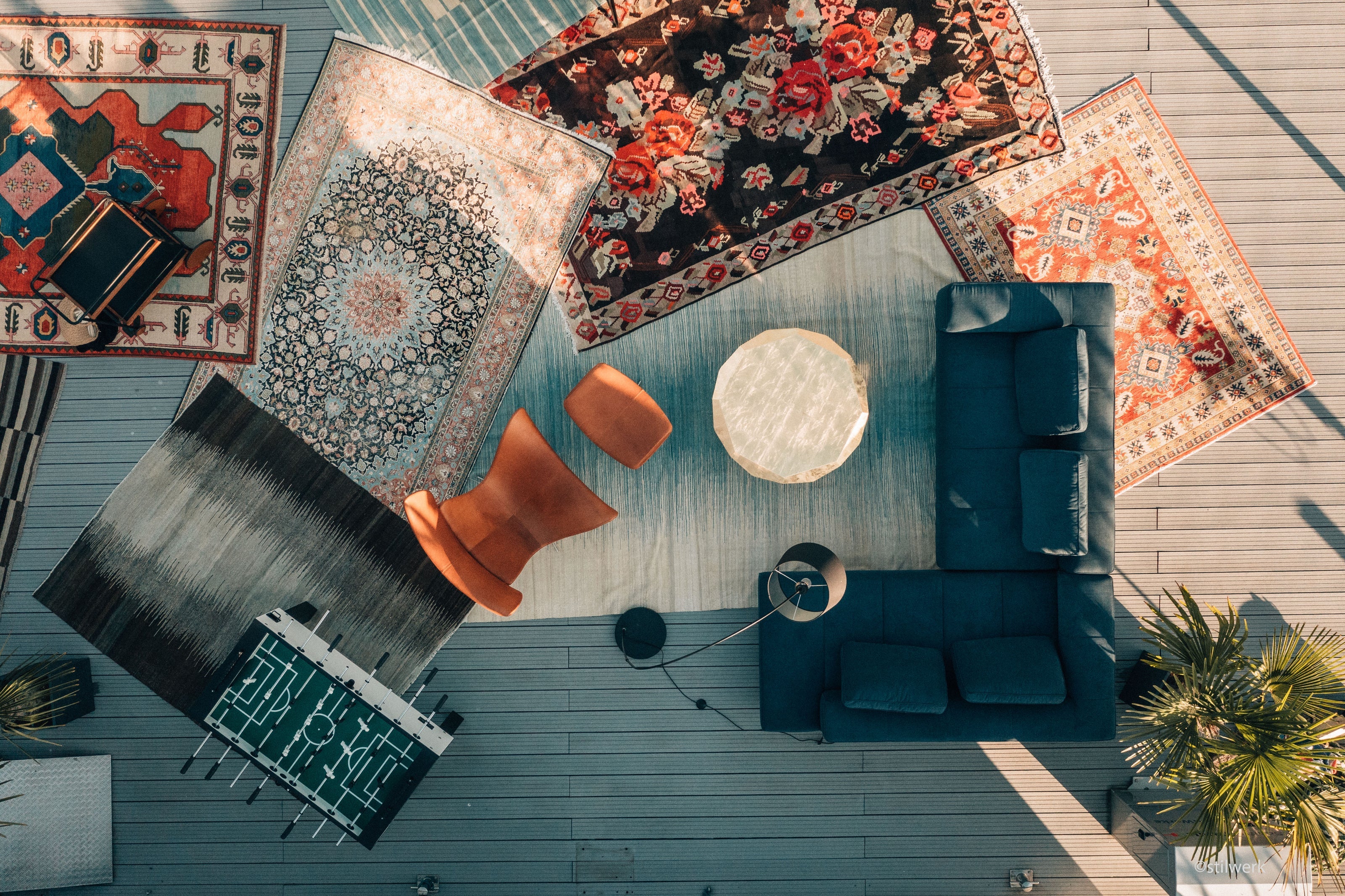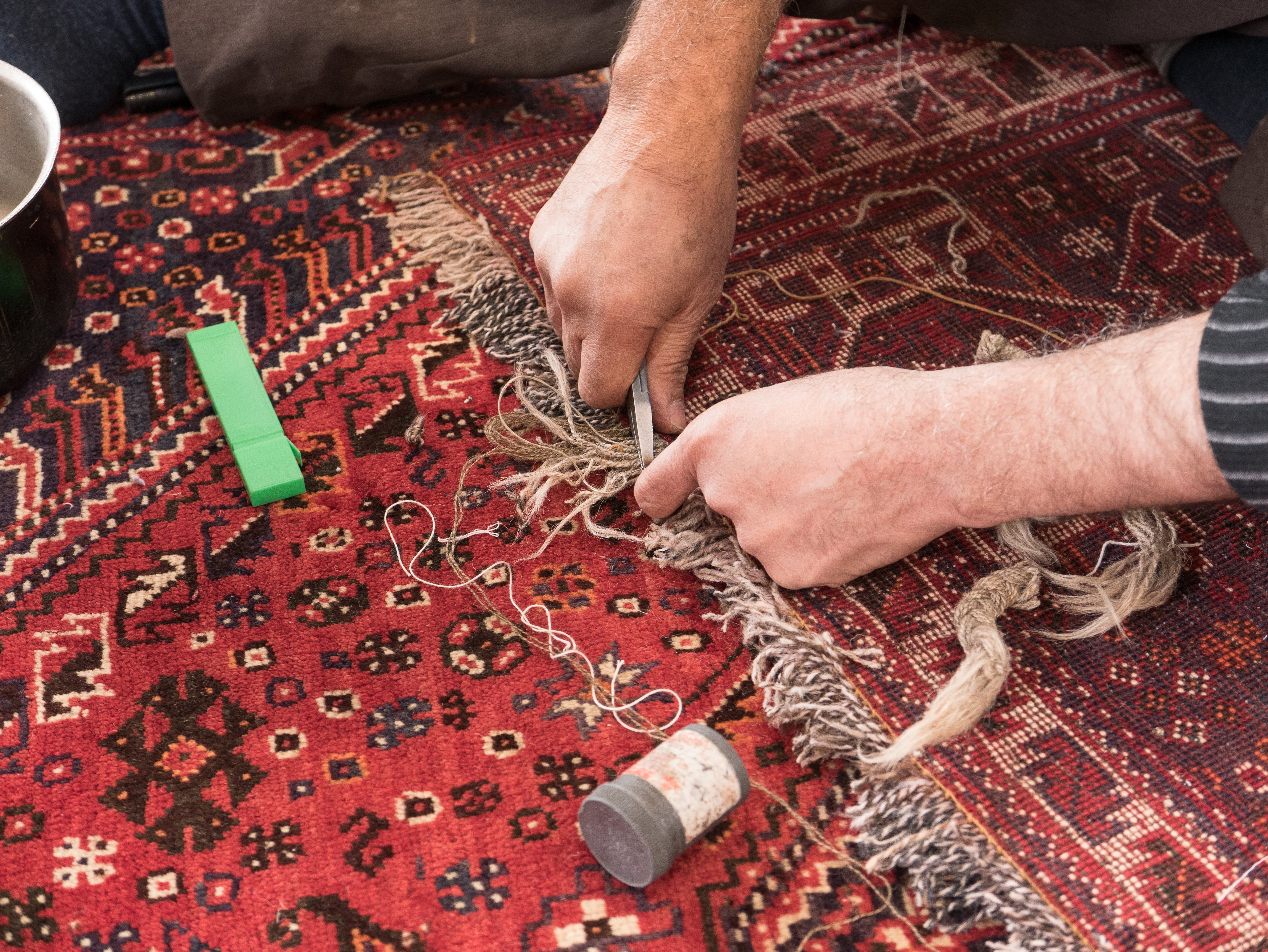
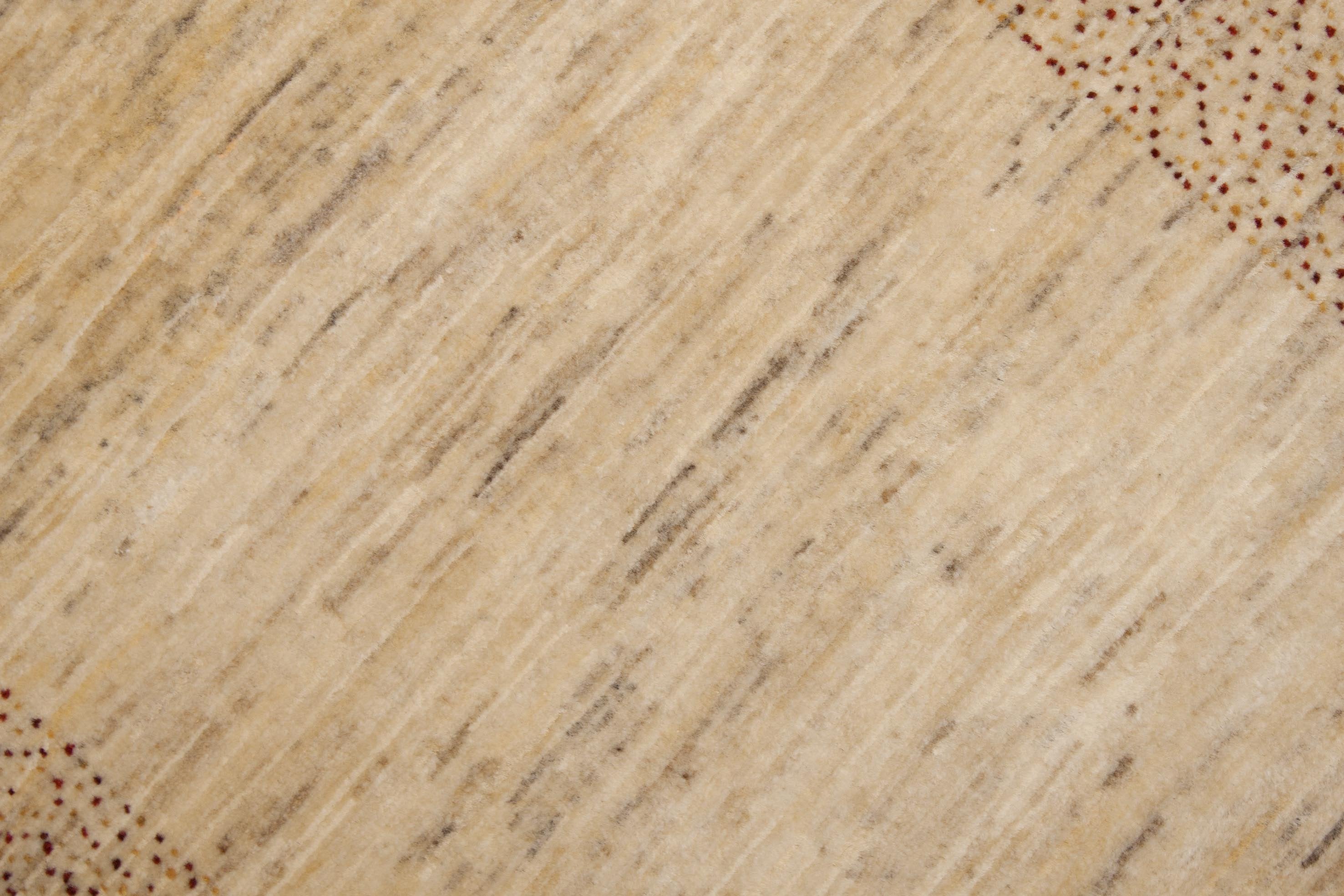
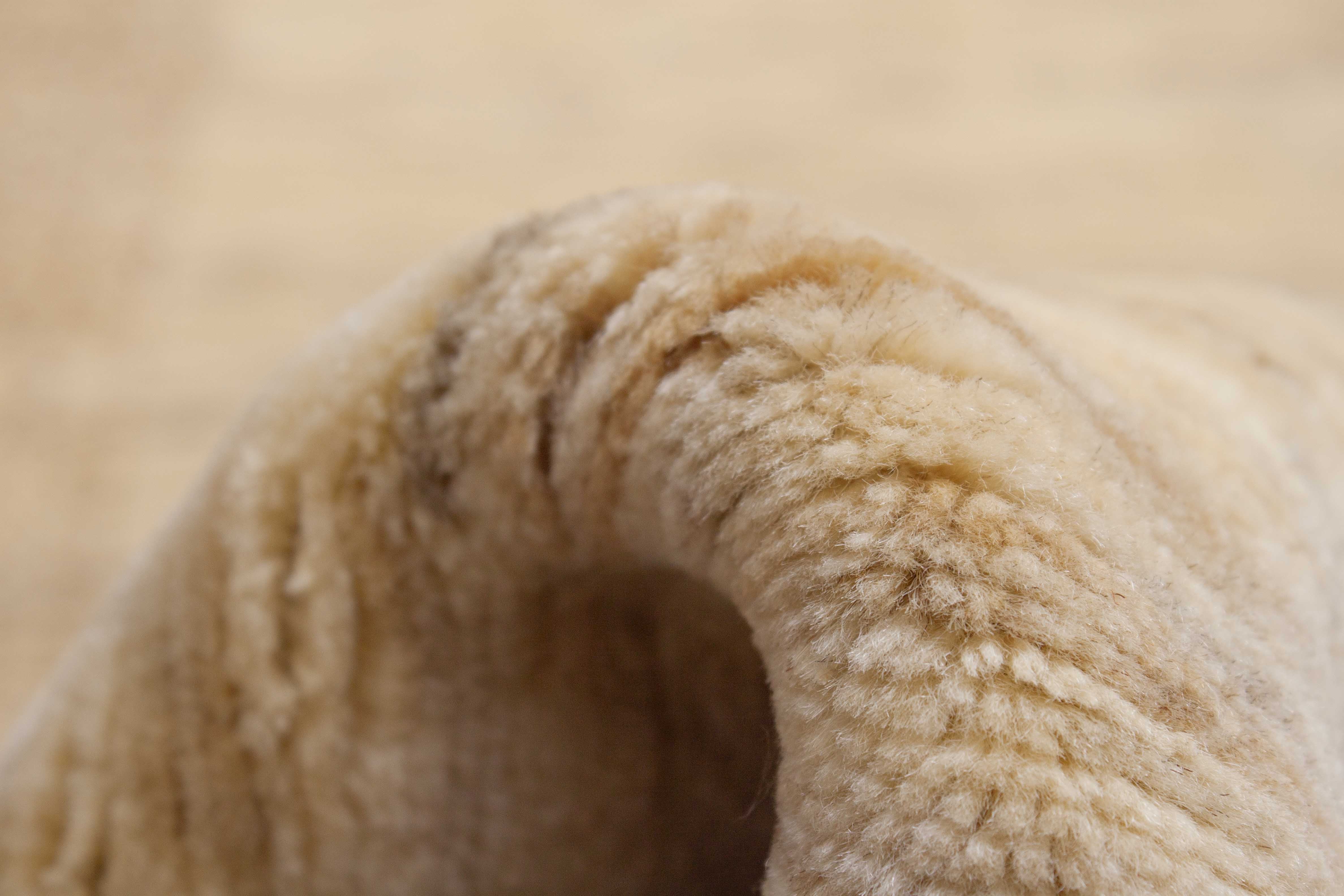
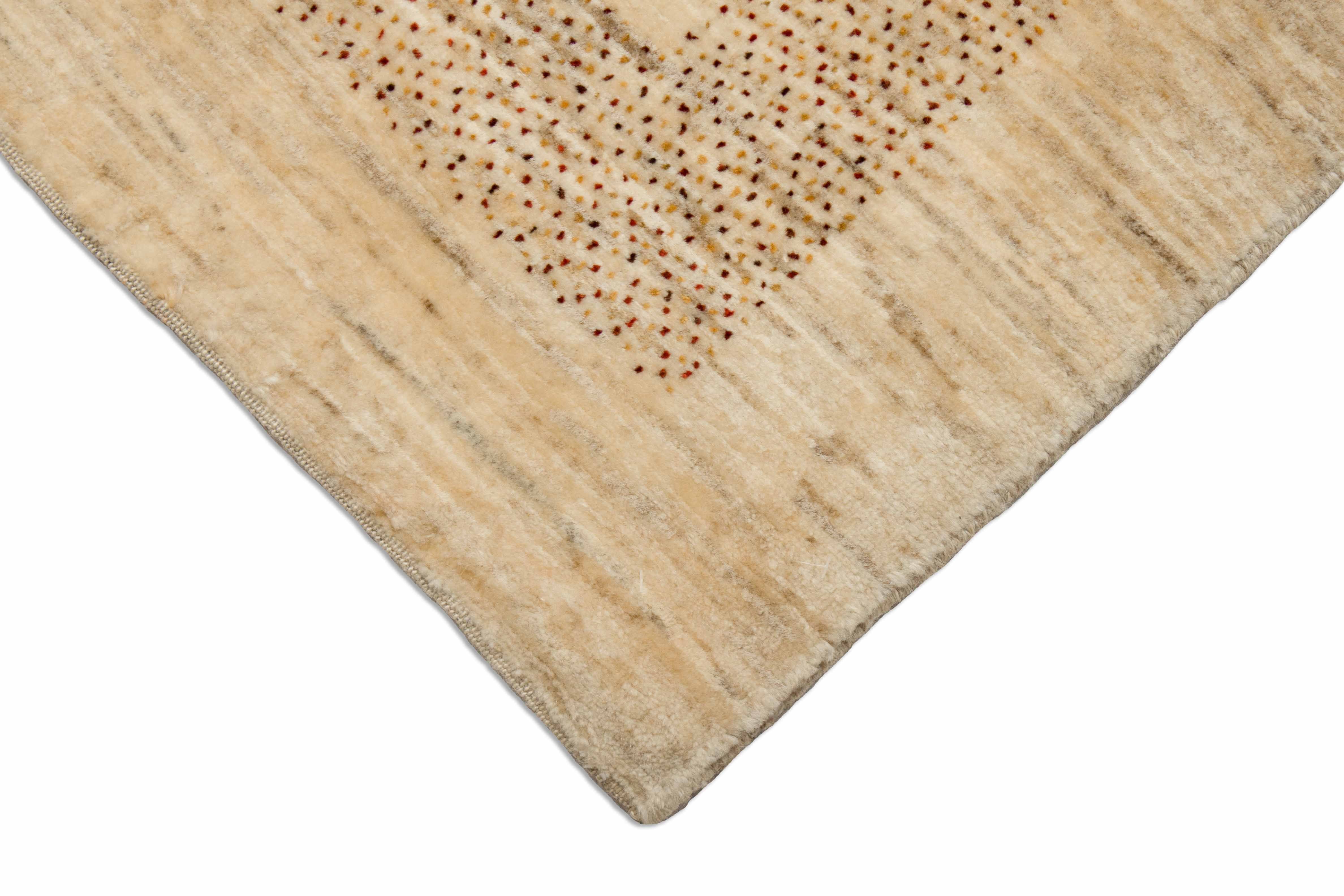
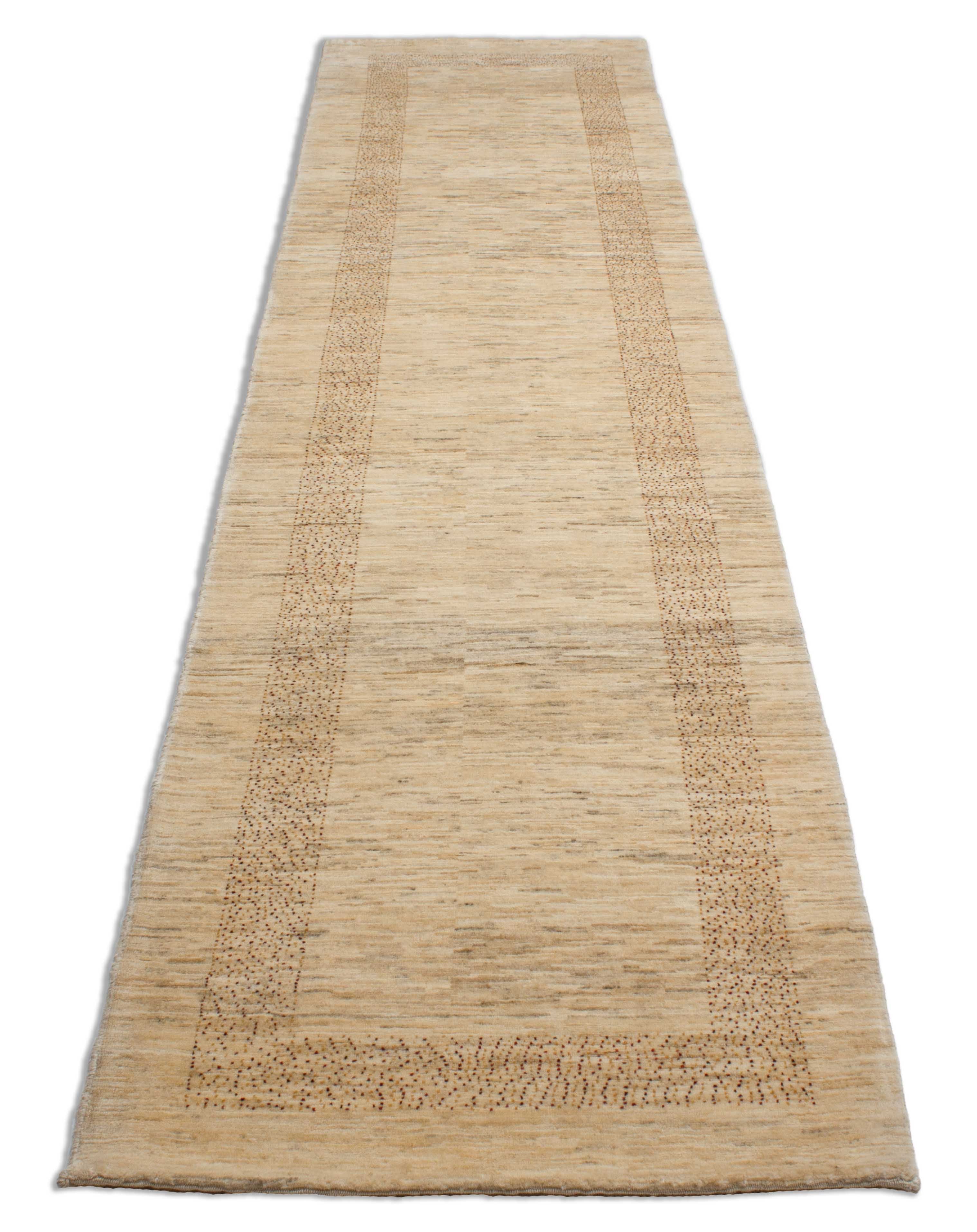
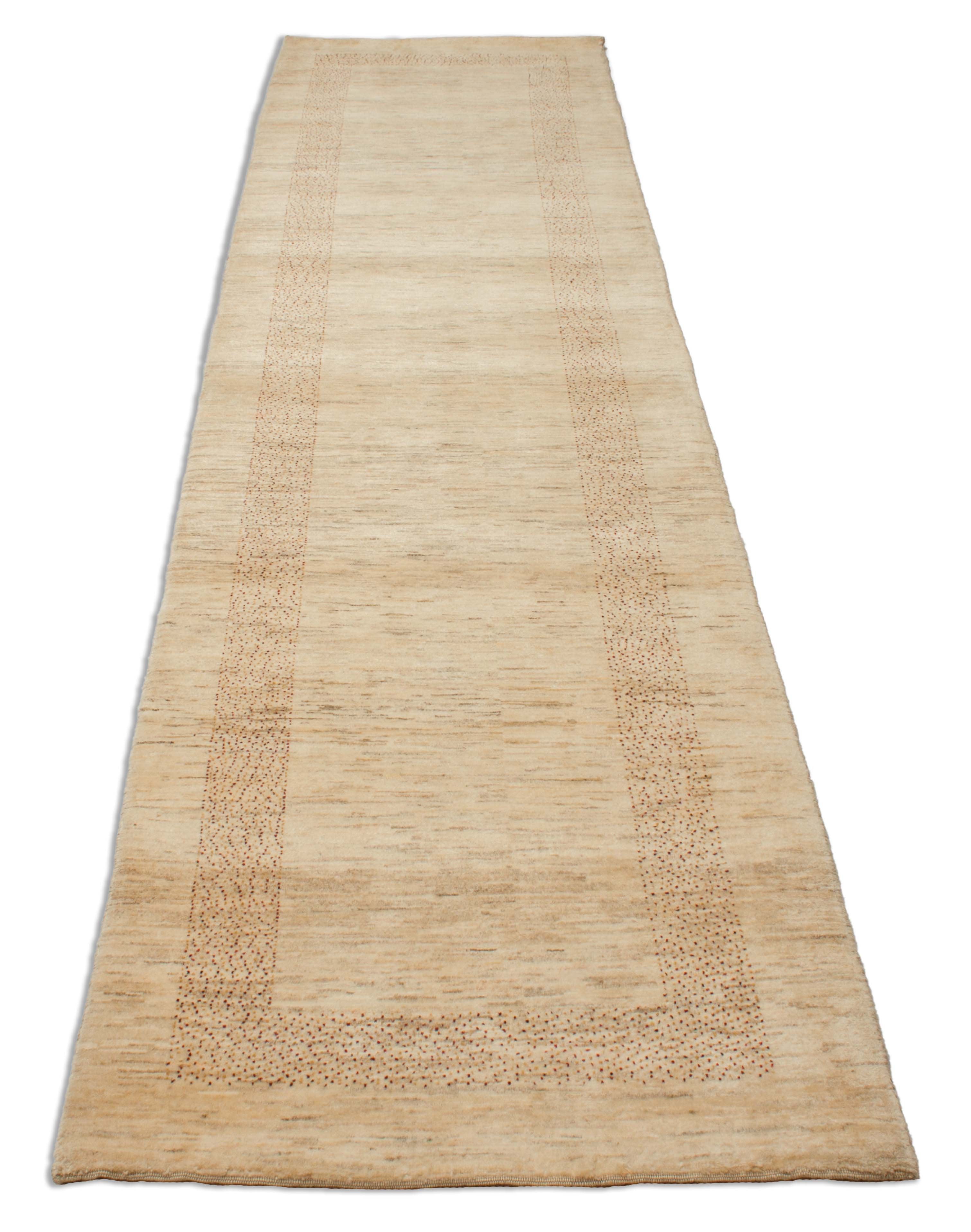
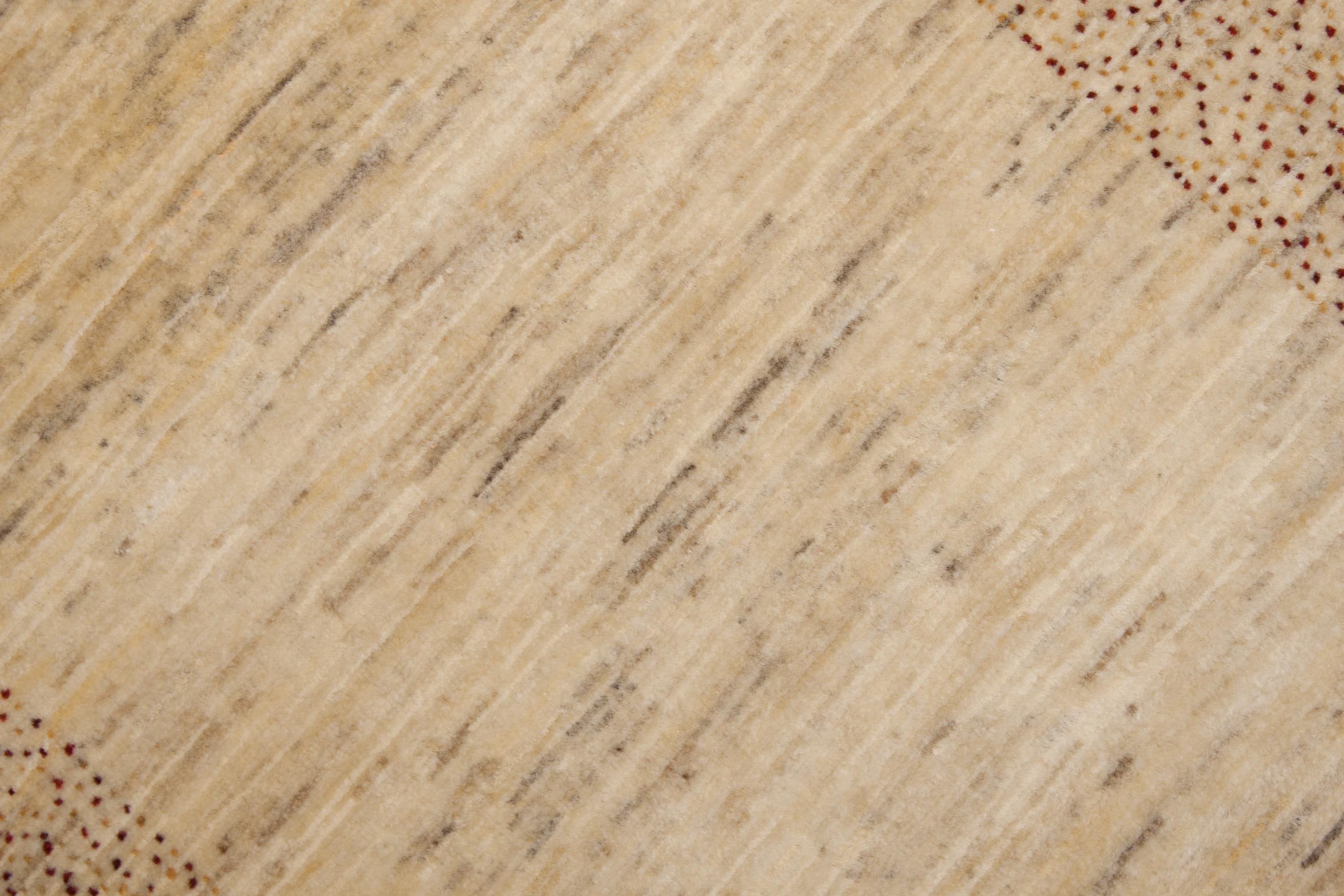
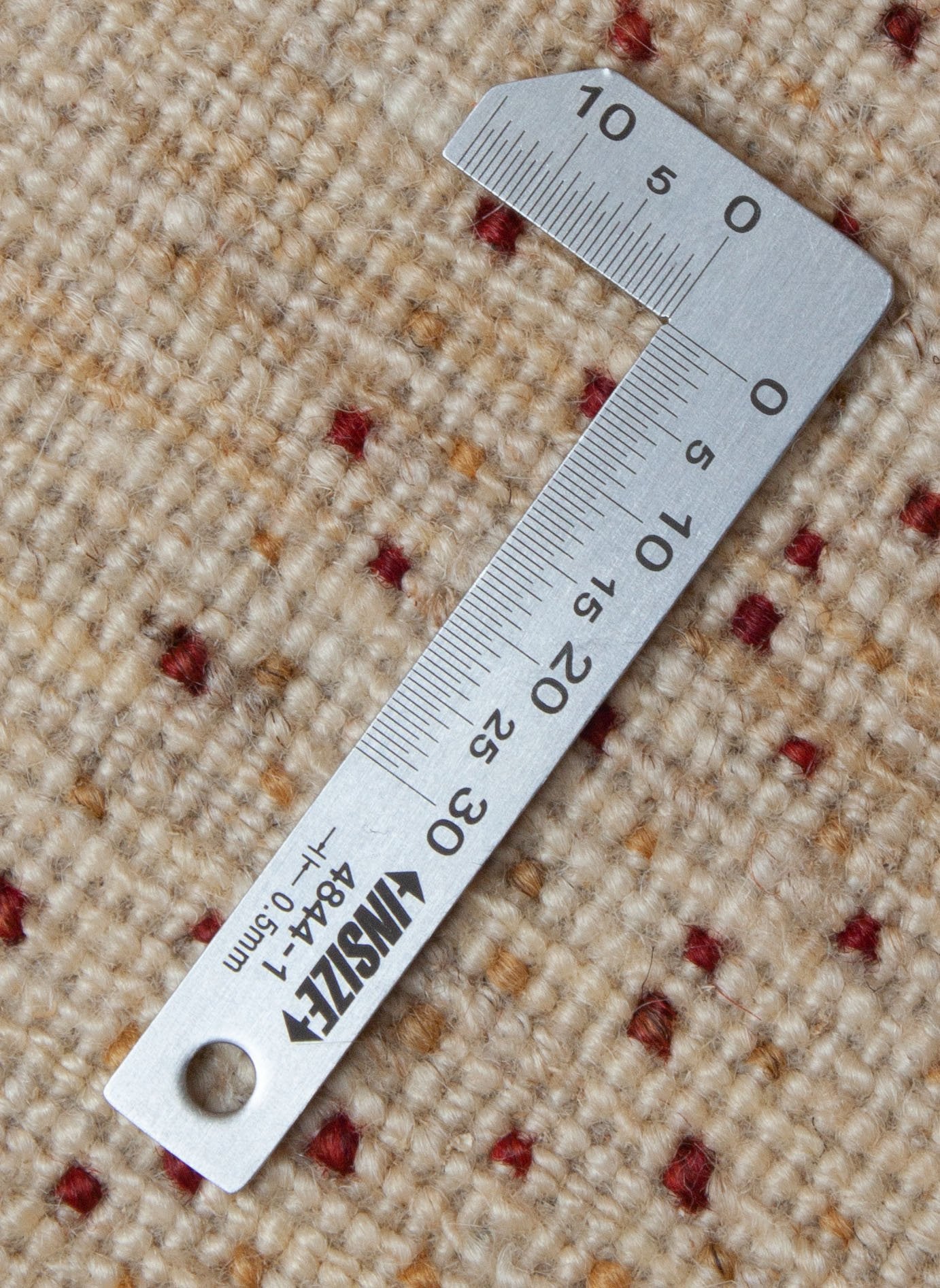
Loribaft
339 cm x 84 cm
Nr. 11780
|
|
1-3 Werktage Lieferzeit (deutschlandweit) |
|
|
14 Tage Probelegen |
|
|
Kostenlose Lieferung & Retoure innerhalb der EU |
Plain Loribaft runner, beige
| Place of origin | Persien |
| Size | 339 cm x 84 cm (= 2.85 qm) |
| Manufacturing | hand knotted |
| Material | Flor: wool (handspun, natural color)Weft & Warp: wool |
| Knots/m2 | 200.000 |
| Pile height | 10mm |
| Condition | new |
| Coloring | beige |
| Edition | Single piece |
Place of origin
Lori rugs have colorful imaginative geometric patterns. Modern Lori today usually have plain and monochromatic designs. Loris usually come in natural shades of cream, brown and grey. But there are also loris in vivid yellow, red or blue. Still today, the traditional stylized and geometric patterns from the everyday life of the nomads, such as goats, camels, dogs, plants or people, can be found in the patterns of Lori rugs. The geometric pattern and the jovial colors make for a pleasant, warm living atmosphere. Lori rugs are a finer version of the Gabbeh, knotted by the Lurs, a tribe in southwest Persia (also Loristan). They are also known as Loribaft. The suffix "baft" stands for "knotted". Translated, Loribaft means Lurs knot.
Patterns
The pile is a plain beige. The simple design is understated, but can also provide a great design accent. The monochrome appearance of this rug fits perfectly in any environment.
The edge of this rug is decorated with a hint of border.
The surface of this Loribaft has a flecked effect. The color changes and light-dark shades of the pile yarn run across the length of the rug, making the colors shimmer and making the rug impervious to dirt. Because of these so-called color jumps Abrash the rug appears more lively. The flecking is the result of the wool of this Loribaft being hand-spun. During dyeing, the natural dyes are absorbed differently.
Material
The technique used to produce the materials of the pile of this Loribaft is over 200 years old. The wool is dyed with natural colors and spun by hand. Dyeing with natural or vegetable dyes is more complicated, expensive and time-consuming than dyeing with chemical dyes. For a bright red, for example, you would need about one kilogram of ground madder root per kilogram of wool as dye. For a strong, not too pale yellow, you would need two kilograms of the dye madder per kilogram of wool. Also spinning wool is time-consuming and labor-intensive. In addition, fewer and fewer people are able to hand spin wool.
But the effort is worth it: By dyeing with natural dyes, the high-quality wool retains its natural fat content. Wool dyed with natural colors and spun by hand creates fascinating, iridescent patterns. The charm of hand-spun wool with its slight irregularities and natural hues unfolds as a contrasting element in modern interiors, but also in rooms that are furnished in a more traditional or country house style. The backing (weft and warp threads) of this Loribaft is made of virgin wool.
Hinweis zu den Fotos
Kinderarbeit? Nein Danke.
Choose options








339 cm x 84 cm
Nr. 11780
|
|
1-3 Werktage Lieferzeit (deutschlandweit) |
|
|
14 Tage Probelegen |
|
|
Kostenlose Lieferung & Retoure innerhalb der EU |

